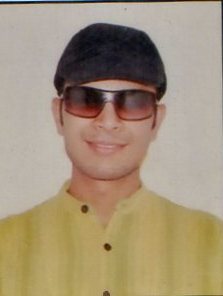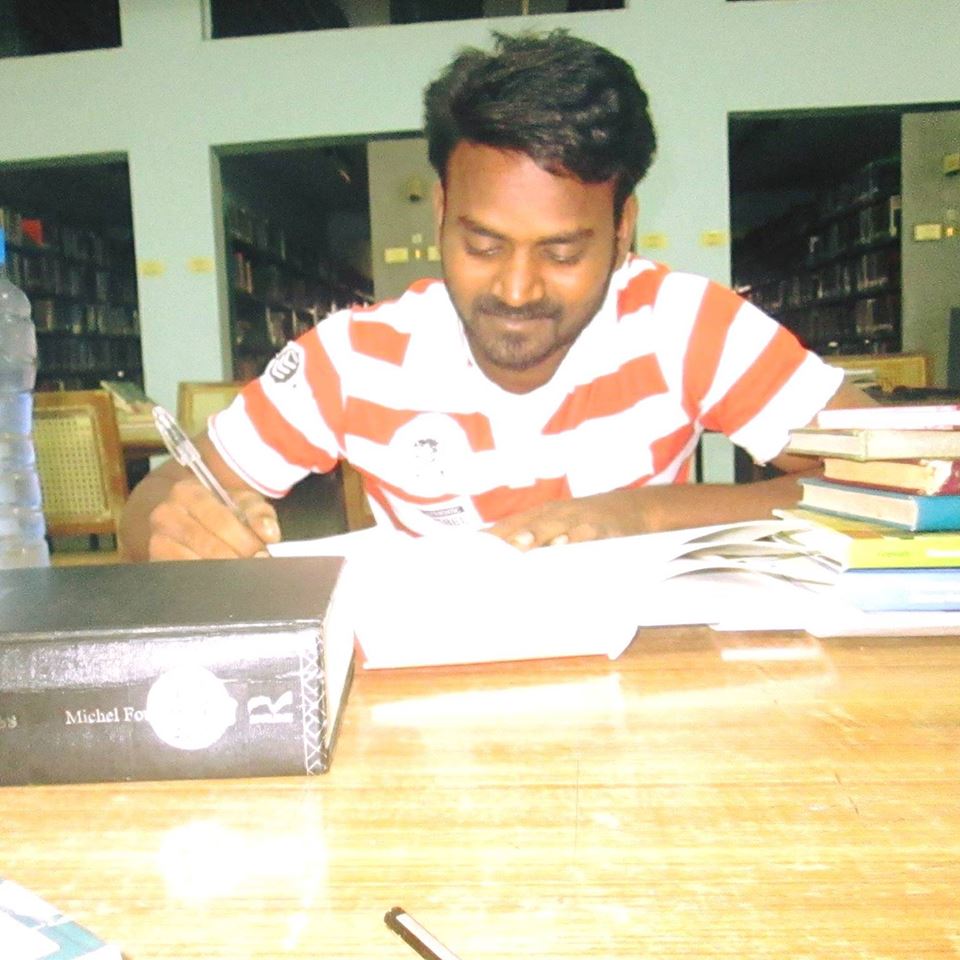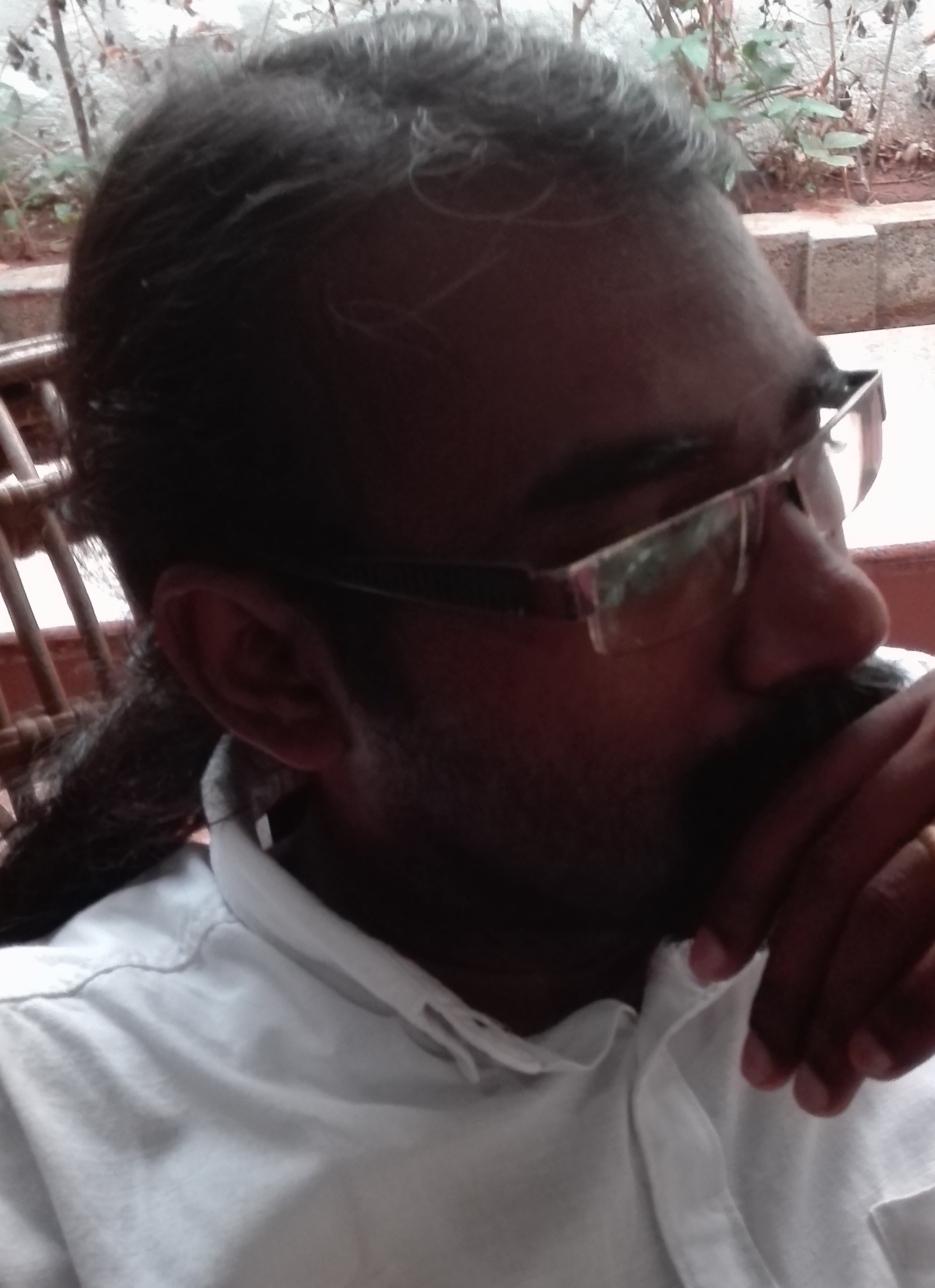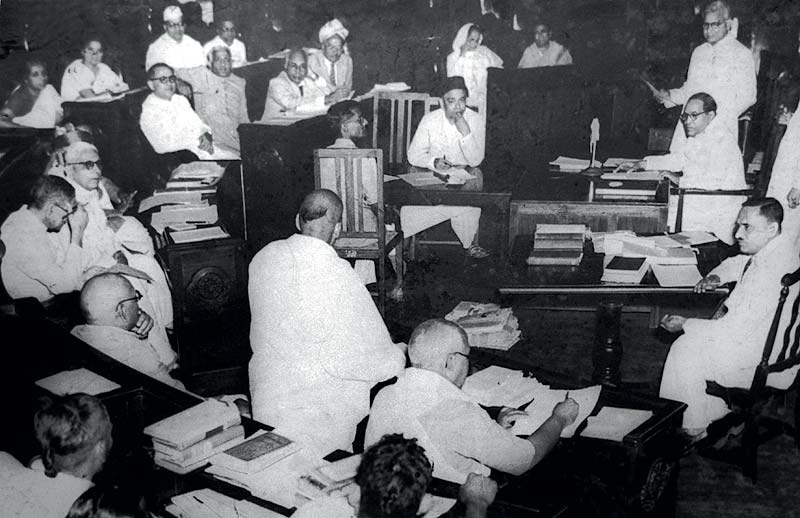Ritesh Tomer
 The debate on libraries: An introduction
The debate on libraries: An introduction
For long, the Indian university system has been surrounded by controversies related to administrative and infrastructural issues. There is a long history of upsets, revolving around the implementation of the reservation policy, the student admission process, hostel non-availability, and staff scarcity. However, the recent uproars around libraries are unique for the Indian university system. It is quite recently that students started rallying for keeping libraries of national universities open round-the-clock, and began challenging the diurnal nature of the libraries’ functioning. The latest demand for increasing the working hours of the central libraries, for instance, has come from two of the leading universities of the nation – namely Banaras Hindu University and Jawaharlal Nehru University.
However, these controversies in the universities of the country are not merely due to the students’ demand for the extension of working hours, but also because of the names with which these libraries go by. This issue gained mass attention after the Jawaharlal Nehru University’s administration declared that they were going to name the Varsity’s central library after Dr. Bhimrao Ambedkar (Indian Express 2016). As soon as the official declaration of the administration entered the public domain, disparate political opinions of student associations – driven by different ideologies in the University – began flaring up.
Some student associations are arguing that the renaming signifies an ideological and political intervention by the State in university affairs. They are interpreting the move as part of the politics of symbolism, with which the central government is glorifying historical figures that accord with its own ideological rhetoric, by naming educational institutes after them. These groups of students are vigorously contesting that since the Jawaharlal Nehru University’s structures have so far remained free from name related politics, a renaming of this kind would be detrimental to this legacy of the university in the future. The structures in the University have received apolitical naming so far; the hostels, for instance, have all been named after the rivers of the country to ensure a secular and politically neutral image of the University. The student associations further argue that name alteration would not make any difference unless adequate funds are raised for the purpose of the development of the institution in question.
On the other hand, there are voices in the University that are considering the alteration of the name of the central library as deference to Dr. Bhimrao Ambedkar, who not only engaged in an endless struggle to emancipate the marginalized groups of Indian society, but also worked zealously for the development of libraries in the country. These student associations are arguing that since Jawaharlal Nehru University has been established as a Model University for the nation, it should include and cherish icons such as Ambedkar, who are role models for the youth of the country.
Since the issue is being debated and discussed widely in the political sphere, it is essential to examine some academic rationales which justify the naming of the Varsity library after Ambedkar. It is pertinent to mention before any further probe into the issue, that the Varsity structures are not completely free from instances of iconization; the University itself has been named after Jawaharlal Nehru, who was a political figure. The Centre for Education in the University – the Zakir Hussain Center for Educational Studies – has been named after a leading educationist of the mid-twentieth century, Dr. Zakir Hussain. The famous Parthasarathy rocks that surround the University campus are also referred to with the name of the first Vice-chancellor of the university, Prof. G. Parthasarathy. Hence, the argument that the re-naming of the library after Dr. Ambedkar would endanger the political neutrality or dissociative legacy of the University is unwarranted and misleading.
Exploring theoretical tenets of the debate: Symmetries between Ambedkar’s idea of Library Science and the vision of the Jawaharlal Nehru University library
Regardless of the politics that may have functioned as the driving force behind naming the University library after Dr. Ambedkar, the action itself should be welcomed by all political associations, keeping aside their ideological orientations, since it essentially marks deference to Dr. Ambedkar – the first visionary of India who had a thorough and comprehensive understanding of Library Science. The re-naming is especially justified because the vision with which Jawaharlal Nehru University’s central library functions, has indisputable similarities with the kind of library science that Ambedkar envisioned in his life. There were two major axioms around which Ambedkar’s ideals of library science revolved; both of which are readily observable in the functioning of the University’s library. Firstly, Ambedkar considered a library to be a hub of books, manuscripts and rare documents – including biographies and auto-biographies – from different disciplines such as history, political science, philosophy, and sociology (Dange 2004: 31). Secondly, libraries in his opinion were not mere information houses; they were secular institutions where people of different castes, classes and cultures could sit together and develop a common culture of fraternity and brotherhood. Ambedkar himself was an extensive user of libraries, and had the opportunity to learn at the best libraries of the time – such as the libraries of Columbia University, London University, British Museum, and the India Office Library at London. Some of his biographers recorded that “so intense was his reading and so much engrossed was he in it that he was always hunted out by the watchmen in the evening” (Keer 1977: 44).
Even a cursory glance through his writings and the speeches he delivered at various occasions shows that despite his numerous socio-political engagements, Ambedkar made innumerable efforts to build book stores and libraries that functioned based on his secular principles. Upon hearing of the proposal of the Government of Maharashtra to build a statue to pay homage to Sir Pherozshah Mehta, a Maharashtrian social reformer and educationist, Ambedkar wrote a letter to the government from the University of Columbia (where he was pursuing Masters in Economics and Political Science), beseeching that a library be established instead of a statue, in the remembrance of Sir P. Mehta (Narake et al. 2014: 162). Later in his life, he himself undertook the task of establishing libraries in various institutions. Within a year of establishing Bahishkrit Hitakarini Sabha – an organisation for flagging the rights of the marginalized sections in Maharashtra – he had set up a library for the purpose of bringing education into the ambit of the Backward Classes (Sontakkey 2004: 309).
During his tenure as the Principal of Bombay Law College in 1936, he enriched the college library with modern literature, and received generous extolment for this endeavour in the college magazine (Lakshmi 2007: 5). Ambedkar also established a library at the People’s Education Society (which instituted the Siddharth Law College) in Bombay in 1945, which later developed into a huge centre for information under the guidance of S. S. Rege. The aim of building a library which would provide books on religion and philosophy, was also included in the agenda of the Buddhist Society of India, which was established by him in 1952 (Narake et al. 2014: 163). Ambedkar was the first educator in those days who provided space for a library at his residence, Rajgriha, which was – according to Rege – the largest and richest of personal collections at the time across the Asian sub-continent (Keer 1977: 245).
As far as his ideas on the internal organization of libraries go, his multi-disciplinary academic orientation in subjects such as economics, political science, philosophy, sociology, anthropology and history, seems to have had a great influence on him. Working in accordance with the first axiom mentioned above, the Siddharth College library as well as the Rajgriha library housed books, reports, reference documents, journals and other such materials from various disciplines. He himself took keen interest in updating the database of Siddharth library and prepared the catalogues and lists of books to be purchased with the help of Professor Manohar Chitnis (Dange 2004: 35). He purchased an old collection of forty-five hundred books from Dr. Telang for the library, which included many rare and notable books such as the auto-biography of Shahu Maharaj, biographies of Indian nation builders, and documents on the political events of the time. A rich collection of the military history of Varoda was also purchased for the library, which comprised of books as well as documents related to the 1875 uprising (Dange 2004: 35). He was certainly aware that additional relevant sources in a library stimulate learners to go beyond the essentials, and help them further expand academic discourses.
Organized on the basis of the same axiom, the towering nine-story structure of Jawaharlal Nehru University’s library disseminates information from various fields, incorporating more than six lakh twenty thousand volumes and books, three hundred seventy-eight print journals, approximately forty-three online journals and several theses and dissertations (Forty-fifth Library Annual Report 2014-15: 395). Established in 1969, the library connects scholars to a variety of knowledge sources and inspires them to contribute to the collective knowledge of the human species.
Ambedkar’s second principle of library science, as inferred from his work, was influenced by his socio-political outlook. He wanted to create a society in which various institutions functioned in an integrated manner, and individuals held rich dialogue so as to evolve a culture of shared interests and common goals – which he termed as fraternity. Knowledge in such a society – believed Ambedkar, will be available to every individual irrespective of caste, class or religion. While directing the librarian of Siddharth College, he stated, “those who do not read create interest in them to read, those who read inspire them to read more and those who read more encourage them to read still more” (Dange 2004: 39). This instruction can be interpreted as being reflective of his desire to build a culture of reading and writing among the masses. He was aware of the fact that educational institutions had remained restricted to upper caste learners, and that knowledge had remained inaccessible to the lower castes under the purity and pollution notion of caste prescriptions. Institutionalized knowledge under the caste system had remained exclusionary in nature, since it only catered to the experiences of the dominant castes. Knowledge, in this manner, had worked as an exclusionary tool that was used for humiliating, rather than enlightening the masses (Narake et al. 2014: 71).
Ambedkar’s lifelong mission was the liberation of the knowledge system from the hegemony of upper castes. He wanted representation of experiences from every section of society in the knowledge system, so as to celebrate the pluralistic realities of Indian society. For this, libraries could play a transformative role, since they offered equal opportunities to the individuals of different socio-economic backgrounds for accumulation of knowledge. Desegregated sources of information would ultimately lead to the enrichment of academics, with diverse opinions and cultural experiences. According to Ambedkar, this inclusion will also make people sensitive and accommodative to multiple realities, which would help constitute a society based on the principle of fraternity. A library, in his opinion, should be a place which can make knowledge accessible with minimal expense. He was aware of the fact that due to caste-based division of labour, the people of the lower castes also existed at the lowest rung of the economic ladder; and therefore, making investments in education was difficult for them (Ambedkar 2014: 44). The library, as a public institution, could help them access the educational resources they need, at a lesser expense.
The JNU library is a standing example of the extension of this idea of Ambedkar’s library science, since it plays a significant role in bringing together the ideas of scholars of different communities under a single roof, and further, to transmit them to students of multi-cultural backgrounds. It has a sitting capacity of more than eight hundred students at a time, and has been equipped with modern technologies to cater to the needs of students. It invests enormously in purchasing expensive resources, aiming to make them available even to the learners belonging the marginalized sections of society. The library had procured three thousand eight hundred eighty-seven print and eight hundred twenty-nine eBooks worth Rs. 1, 26, 18, 661 and Rs. 32, 37, 004 respectively during the year 2014-2015 (Forty-fifth Library Annual Report 2014-15: 400). The intense discussions and dialogues over national-international issues within and outside class-rooms are extended by the services that the Varsity library provides to its users – twenty-one hours a day.
One of the modern advancements in library science is the development of information sharing systems that enable extension of resources to fellow institutions, ensuring that users are benefited beyond the roof of a library. Jawaharlal Nehru University’s library, taking advantage of the same technology, has created a sophisticated network with more than four thousand-five hundred libraries across the globe, which its users can access to get texts issued for a limited period of time on library loan basis. The Forty-fifth Library Annual Report, 2014-15, reports issuing eleven hundred twenty-nine books and receiving six hundred sixty-six books on interlibrary loan, via the library development network – DELNET (2014-15: 400). This collaboration component of the Varsity library resembles and extends Ambedkar’s principle of library science, namely, information sharing. While issuing directions to the library staff of Siddharth College, Ambedkar had stated that “whoever the reader may be internal or external, visits the library for reference collections or reading should not be rudely sent back in disgust mood. If a particular book is not available in the library that may purchased for him and if it is not available in market then it be made available by borrowing from some other library but the need of the reader should be met” (Dange 2004: 37).The Jawaharlal Nehru University library seems to be adhering to these instructions by providing access to books and other resources of renowned universities across the globe to its users, via the library development networking services (Forty-fifth Library Annual Report 2014-15: 400).
However, while defending the decision to name the Varsity library after Dr. Ambedkar, it must also be highlighted that even though Jawaharlal Nehru University’s library has been functioning in line with the principles of library science envisaged by Dr. Ambedkar, substantive steps at the level of infrastructural development are still required to be taken within the library, in order to resemble the institution that Ambedkar had dreamed of. First and foremost, the literature of Dr. Ambedkar and other Dalit intellectuals should be made available through a special shelf in the library. Secondly, more staff should be appointed to ensure smooth and quick services to its users. Thirdly, the furnishing of existing halls and construction of new ones – with the purpose of accommodating the rapidly increasing number of students in the university – is required. If such steps are not taken up, it would give the impression that the re-naming of the library has been done for the sake of mere symbolism, as already alleged by some political parties.
Conclusion
Finally, any concluding remarks on an issue associated with Jawaharlal Nehru University, would go against its culture of building reservoirs of knowledge through continuous debate and discussion. Therefore, the current discourse on the issue of the re-naming of the University’s library, which is still in its initial stage, must not be concluded. However, in order to bind this piece, it can be stated that the naming of the library after Dr. Ambedkar would not contradict the ideals with which the University’s library has been functioning for years; therefore, the decision of administration should not be wholly dismissed.
~
References
1. Ambedkar, Bhim Rao (2014): “On Grants for Education,” Dr. Babasaheb Ambedkar’s Writings and Speeches (Vol. 2), Hari Narake (Ed.), New Delhi: Dr. Ambedkar Foundation, pp 39-44.
2. Dange, D. J. (2004): “Ambedkar’s Vision of Library,”, Ambedkar’s Vision and Education of Weaker Sections, D. K. Verma and A. Sohrot (Eds.), Mhow, MP: Manak Publication, pp31-39.
3. Indian Express (2016): “After Demands from ABVP, JNU Names Library after B. R. Ambedkar,” 22 June; available at http://indianexpress.com/article/cities/delhi/jnu-library-name-br-ambedkar-abvp-demand-2867881/
4. Forty-fifth Library Annual Report of Jawaharlal Nehru University, 1 April 2014 to 31 March 2015, New Delhi: Jawaharlal Nehru University.
5. Keer, Dhananjay (1977): Dr. Ambedkar, Life and Mission, New Delhi: Popular Prakashan.
6. Lakshmi, Didla and V. Rao (2007): Ambedkar’s Thrust on Education and Reservation its Impact on Emancipation of Dalit, OBC and Minorities, New Delhi: Sunrise.
7. Sontakkey Y. D. (2004): Thoughts of Dr. Babasaheb Ambedkar, New Delhi: Samyak Prakashan.
~~~
Ritesh Tomer is a Ph.D Scholar in Zakir Husain Centre for Educational Studies (JNU) and Assistant Professor, Department of Education, Delhi University.










